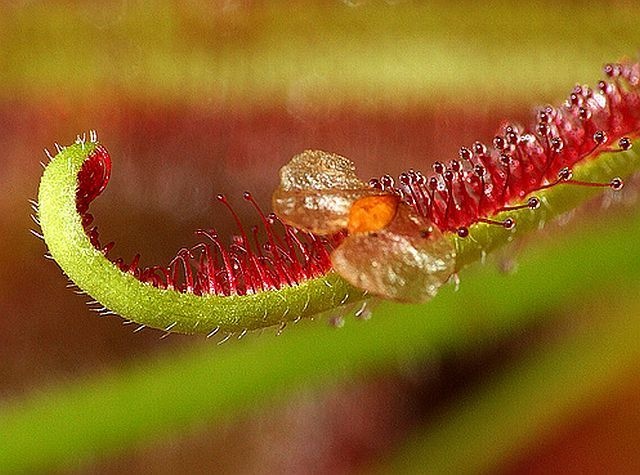|
|
Carnivorous Plant Consuming Insects
|
Common tap or drinking water contains minerals (particularly calcium salts) that will quickly build up and kill the plant. This is because most carnivorous plants have evolved in nutrient-poor, acidic soils and are consequently extreme calcifuges. They are therefore very sensitive to excessive soil-borne nutrients. Since most of these plants are found in bogs, almost all are very intolerant of drying. There are exceptions: tuberous sundews require a dry (summer) dormancy period, and Drosophyllum requires much drier conditions than most.
Outdoor-grown carnivorous plants generally catch more than enough insects to keep themselves properly fed. Insects may be fed to the plants by hand to supplement their diet; however, carnivorous plants are generally unable to digest large non-insect food items; bits of hamburger, for example, will simply rot, and this may cause the trap, or even the whole plant, to die.
A carnivorous plant that catches no insects at all will rarely die, although its growth may be impaired. In general, these plants are best left to their own devices: after underwatering with tap-water, the most common cause of Venus flytrap death is prodding the traps to watch them close and feeding them cheese and other inappropriate items.
Most carnivorous plants require bright light, and most will look better under such conditions, as this encourages them to synthesise red and purple anthocyanin pigments. Nepenthes and Pinguicula will do better out of full sun, but most other species are happy in direct sunlight.
|
|









